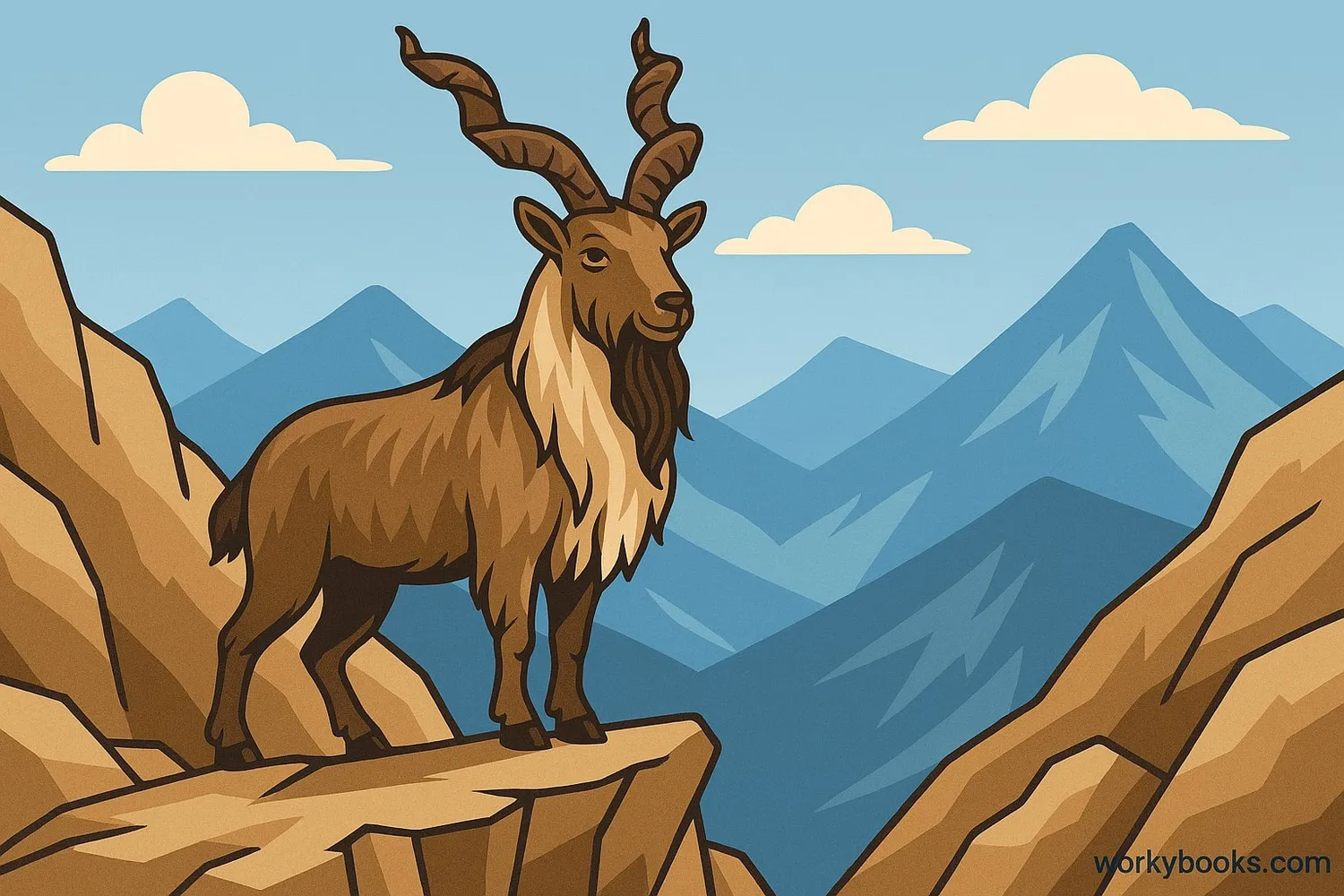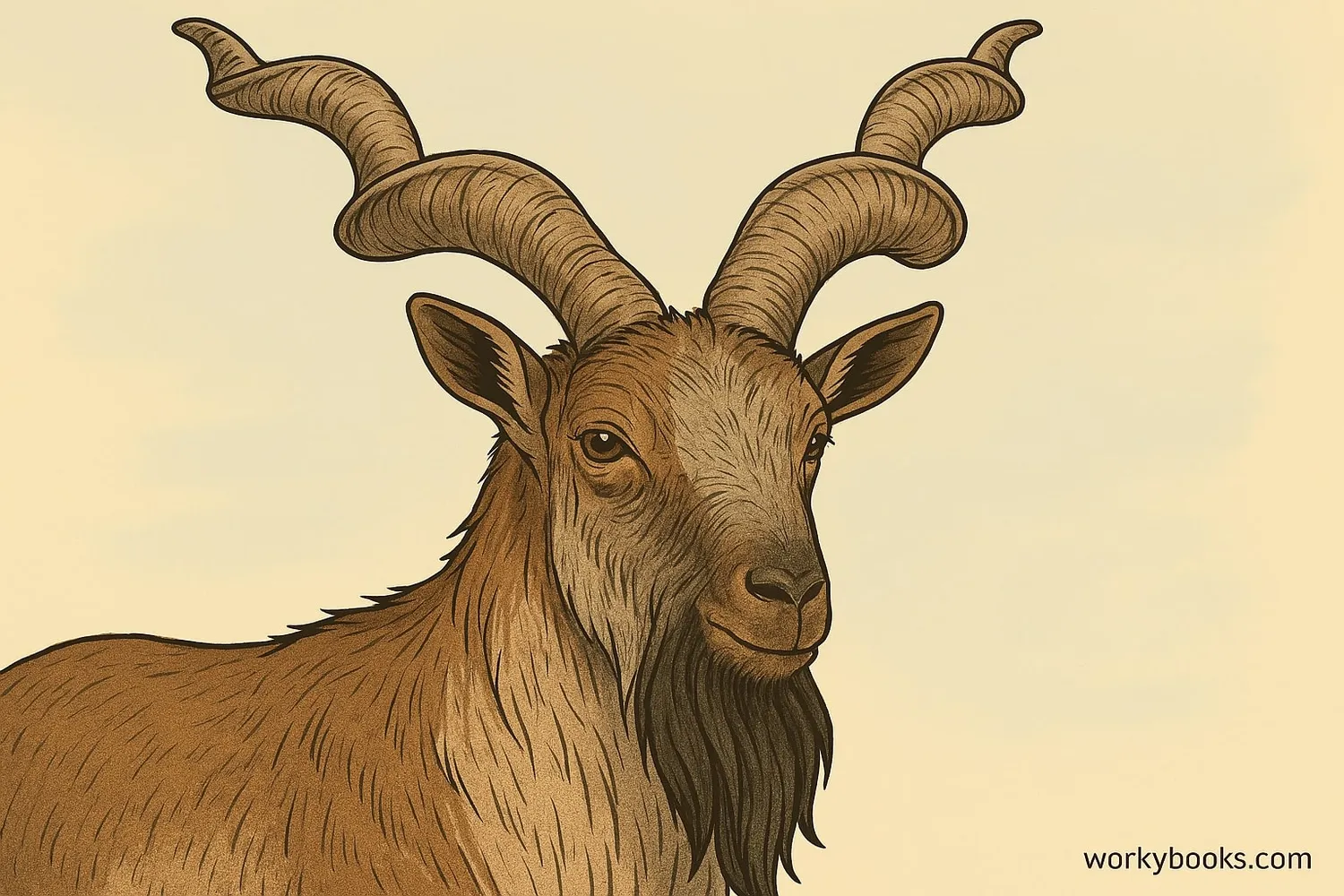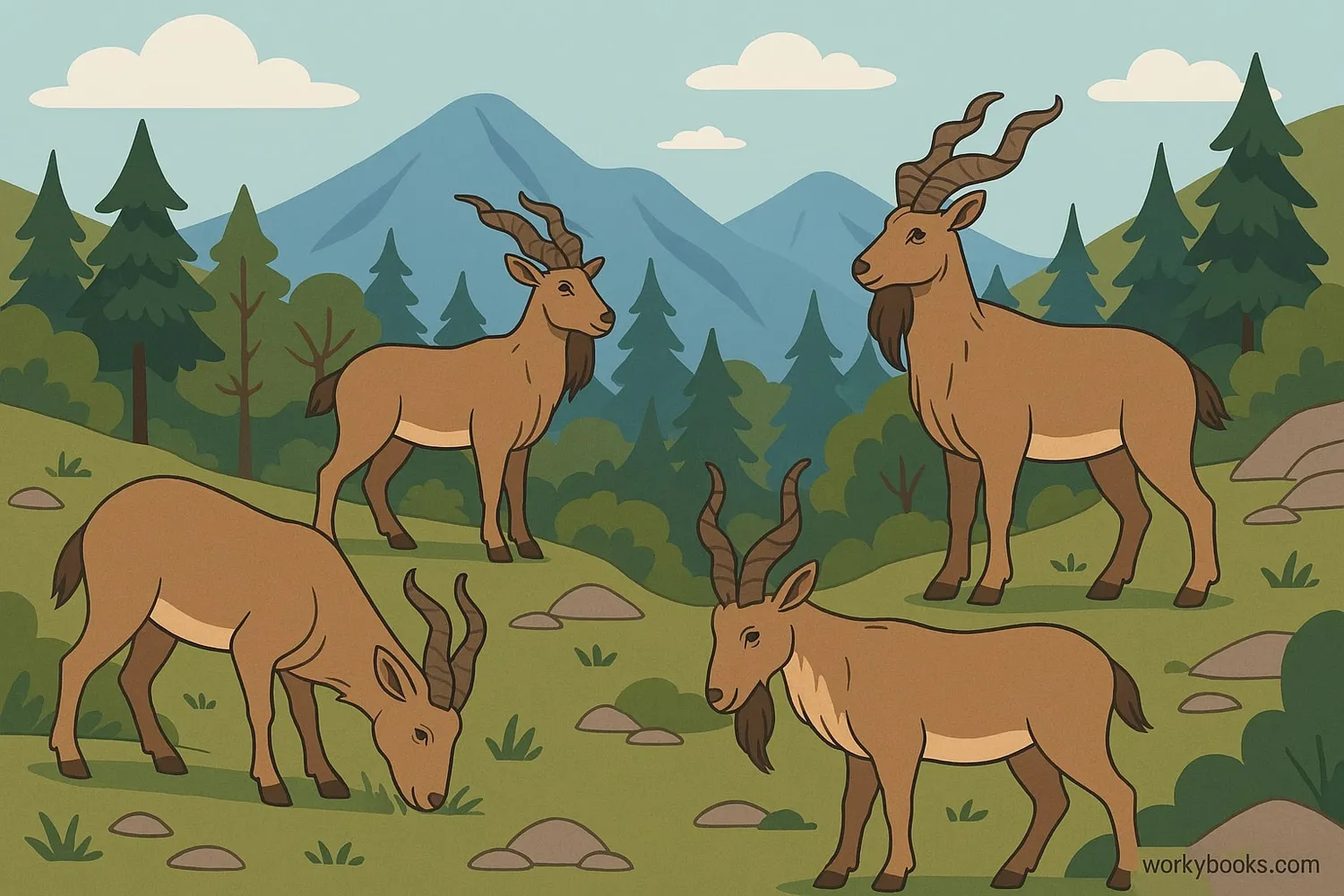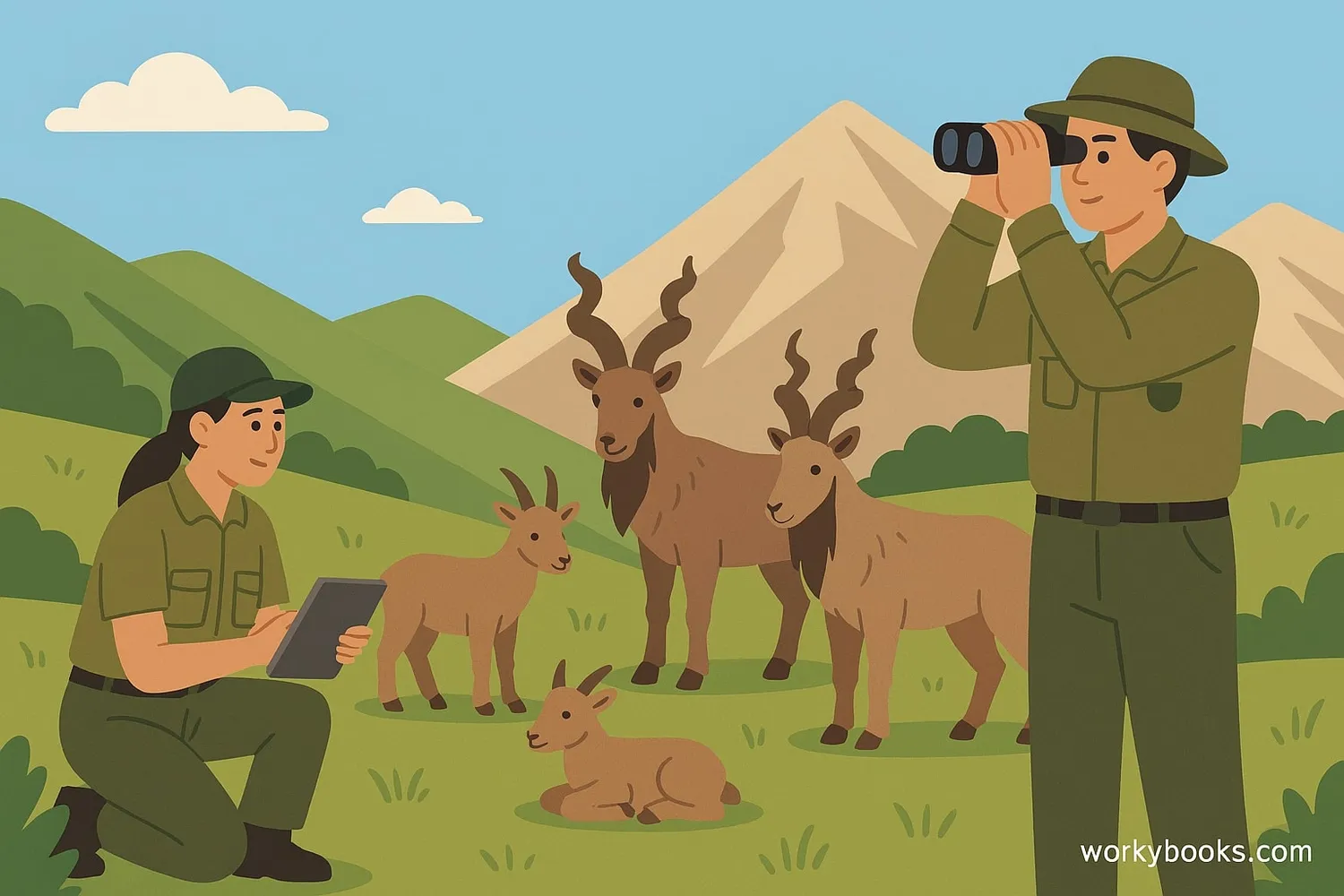Markhor - Definition, Examples, Quiz, FAQ, Trivia
Discover the amazing spiral-horned goats of Central Asia
What is a Markhor?

The markhor is a large wild goat found in the mountains of Central Asia. Its name comes from Persian words meaning "snake-eater," though they actually eat plants! Markhors are famous for their spectacular spiral horns that can grow over 5 feet (1.6 meters) long in males.
These amazing animals are the national animal of Pakistan and an important symbol in the region. They live in steep, rocky mountains between 2,000-12,000 feet elevation, where their incredible climbing skills help them escape predators.
Species Fact!
Markhors are one of the world's largest goat species! Males can weigh up to 240 pounds (110 kg) and stand 40 inches (102 cm) tall at the shoulder.
Physical Characteristics

Markhors have several distinctive physical features that help them survive in their mountain habitats:
Spiral Horns
Impressive corkscrew-shaped horns that grow up to 63 inches (160 cm) long in males
Shaggy Coat
Thick fur that changes with seasons - short in summer, long and shaggy in winter
Powerful Legs
Strong limbs and hooves adapted for climbing steep cliffs
Distinctive Beard
Long beard on males, shorter on females
Color Variations
Range from light tan to dark brown with seasonal changes
Male markhors are significantly larger than females and have more impressive horns. Their horns aren't just for show - males use them in competitions during mating season to establish dominance. The spiral shape helps protect their eyes during these contests.
Habitat & Behavior

Markhors live in some of the most rugged mountain regions of Central Asia:
Behavior: Markhors are most active in the early morning and late afternoon. They live in small herds that typically include females and their young, while adult males are more solitary except during mating season. They are excellent climbers and can scale near-vertical cliffs to escape predators like snow leopards, wolves, and lynx.
Diet: As herbivores, markhors eat grasses, leaves, herbs, and shrubs. They often stand on their hind legs to reach higher vegetation. During winter, they descend to lower elevations to find food.
Climbing Experts!
Markhors have specially adapted hooves with rubbery cores that provide excellent grip on rocky surfaces, making them incredible climbers.
Conservation Status

Markhors are currently classified as Near Threatened by the International Union for Conservation of Nature (IUCN). Their population has been declining due to several threats:
Hunting
Illegal poaching for meat and trophy hunting for their impressive horns
Habitat Loss
Expanding human settlements and livestock grazing areas
Other Threats
Disease transmission from domestic goats, climate change, and political instability in their range
Conservation Efforts: Several programs are working to protect markhors:
• Community-based conservation projects in Pakistan
• Anti-poaching patrols in protected areas
• Captive breeding programs
• Sustainable trophy hunting programs that fund conservation
Thanks to these efforts, markhor populations have started to recover in some areas, showing that conservation can work when communities are involved!
Markhor Quiz
Test your knowledge about markhors with this quiz! Answer all 5 questions to see how much you've learned.
Frequently Asked Questions
Here are answers to common questions about markhors:
Fun Markhor Trivia
Discover amazing facts about these remarkable mountain goats!
National Symbol
The markhor is Pakistan's national animal and appears on Pakistani coins and military insignia as a symbol of pride and strength.
Record Horns
The longest recorded markhor horns measured 63 inches (160 cm) - longer than most humans are tall!
Conservation Success
In Pakistan's Torghar Conservation Project, markhor populations increased from 100 to over 3,500 in 30 years through community-based conservation.
Wild Ancestor
Scientists believe markhors may be the ancestors of some domestic goat breeds through interbreeding with wild goats thousands of years ago.


